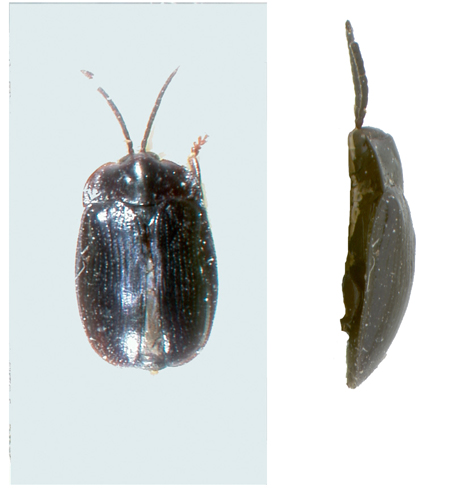Parimatidium
Introduction
Parimatidium Spaeth (Coleoptera: Chrysomelidae: Cassidinae) contains 26 species from Central and South America (Staines 2012) and has never been revised. Parimatidium bahianum (Spaeth) is the only species associated with palms.
Distribution
Parimatidium bahianum is found in Brazil (Bahia).
Hosts
Parimatidium bahianum feeds on Geonoma sp. (Bondar 1940a) and Cocos nucifera L. (Bondar 1940b) (Arecaceae).
Damage
Adults and larvae are often observed on the lower surface of young fronds, but the feeding damage is not usually serious. Damage consists of feeding channels running 5-6 mm wide parallel to the veins and which turn brown over time (Bondar 1940c).
Adults and larvae feed on clustered fruit rasping the skin starting at the apex and causing scarring. The feeding channels are 4-5 mm wide and in heavy infestations can run together. This results in drying of the epicarp and prevents the fruit from maturing properly. The damage also exposes the fruit to fungal attack (Bondar 1940c).
Life history notes
none published
Bibliography
Bondar, G. 1940a. Insectos nocivos e molestias do coqueiro (Cocos nucifera) no Brasil. Boletim do Instituto Central de Fomento Economico de Bahia 8, 160 pp.
Bondar, G. 1940b. O problema do coqueiro no Brasil. O Campo 11 (122): 44-45.
Bondar, G. 1940c. Notas entomológicas da Bahia. V. Revista de Entomologia Rio de Janeiro 11: 199-214.
Staines, C. L. 2012. Tribe Imatidiini. Catalog of the hispines of the world (Coleoptera: Chrysomelidae: Cassidinae). http://entomology.si.edu/Collections_Coleoptera.html



